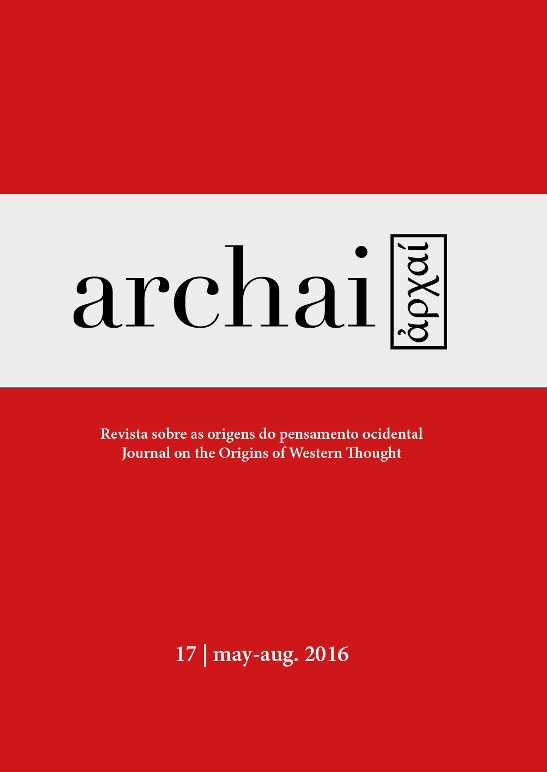Is Platonism life denying?
DOI:
https://doi.org/10.14195/1984-249X_17_4Abstract
The Phaedo contains a number of passages which could lead to the interpretation that Platonism is a denial of life.
Such an interpretation could only be maintained by reading these passages out of context and also by ignoring a number of elements from other Plato’s texts. The first step to solve this problem is to stress that such statements about how desirable is death always concern the philosopher, whose model is the dialogues’ character, Socrates. This character was meticulously constructed to be regarded as someone extraordinary; a character who has undergone a process of “initiation” in which he acquired a philosophical dýnamis, namely, the capacity to recognize the existence and the value of the highest objects of knowledge, and also the pleasure of their contemplation. Considering that “death” in the Phaedo means only the separation of body and soul, a process in which soul is not annihilated, then it means the continuity of the contemplative life, which during the corporeal existence was hampered by the limits imposed by the body. Hence, life after death means a life of continuous enjoyment of the greater good and pleasure. But beyond that line of argument, it must be determined how Plato, in his dialogues, addressed the issue of the bodily pleasures for both the philosopher as well as for the common man. And, in this case, it is clear that Platonism is not a denial of life, but rather the affirmation of life, both in bodily dimension and spiritual.
Downloads
Downloads
Published
How to Cite
Issue
Section
License
Given the public access policy of the journal, the use of the published texts is free, with the obligation of recognizing the original authorship and the first publication in this journal. The authors of the published contributions are entirely and exclusively responsible for their contents.
1. The authors authorize the publication of the article in this journal.
2. The authors guarantee that the contribution is original, and take full responsibility for its content in case of impugnation by third parties.
3. The authors guarantee that the contribution is not under evaluation in another journal.
4. The authors keep the copyright and convey to the journal the right of first publication, the work being licensed under a Creative Commons Attribution License-BY.
5. The authors are allowed and stimulated to publicize and distribute their work on-line after the publication in the journal.
6. The authors of the approved works authorize the journal to distribute their content, after publication, for reproduction in content indexes, virtual libraries and similars.
7. The editors reserve the right to make adjustments to the text and to adequate the article to the editorial rules of the journal.



